Technologies
Samsung’s New Flip Phone Highlights the Clamshell’s Comeback
The Galaxy Z Flip 5 shows that the flip phone has revived its main-character energy from yesteryear.
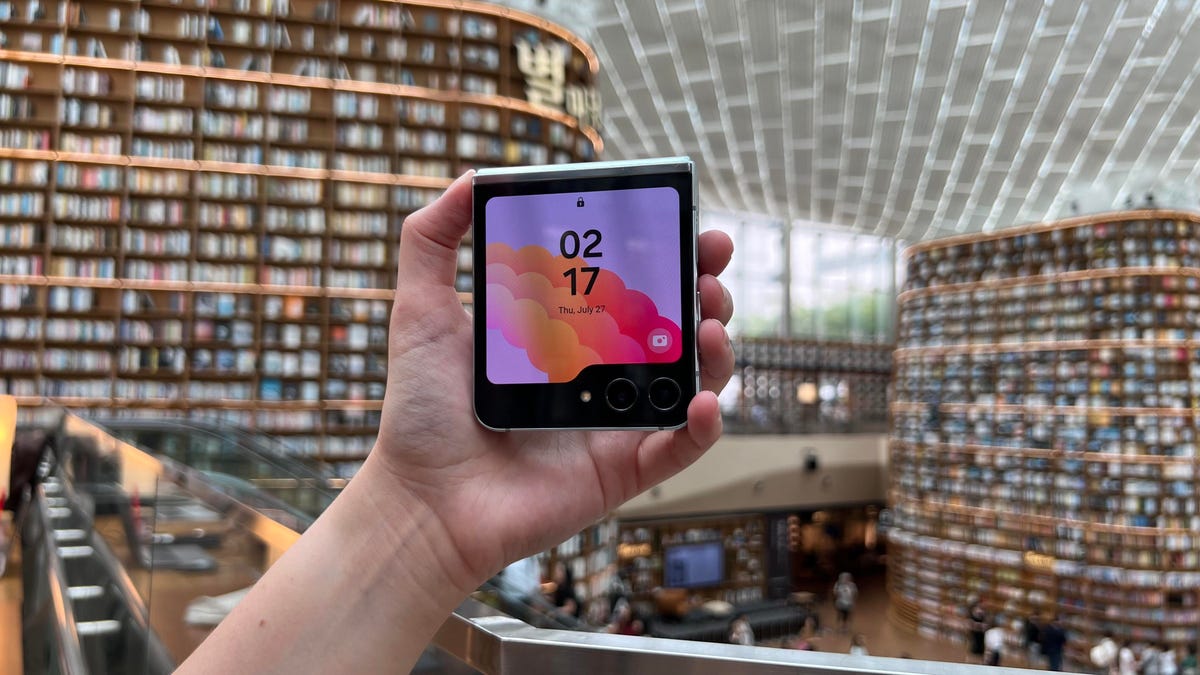
Before smartphones turned ubiquitous, flip phones were the consumer-tech status symbol. They had compact and cool designs and user-friendly features. And let’s be honest: It’s tough to beat the thrill of ending a call by snapping a phone shut.
Nowadays, the flip phone is back in vogue, albeit the «smart» kind, as old becomes new again.Just ask Euphoria star Sydney Sweeney, whom Samsung has tapped to drive that point home. In an ad for the company’s latest flip phone, the actress proclaims that her Galaxy Z Flip 5 is the «best accessory» for «how she looks and feels.»
In July, Samsung unveiled its latest wave of foldable phones at its Unpacked event, where the Galaxy Z Flip 5 was arguably the tech star of the show. Compared to the Galaxy Z Fold 5, it received major upgrades, including a redesigned hinge and a much larger cover screen. The addition of that larger external display, along with software upgrades, means you can do things like record audio, peruse your calendar or track the stock market without ever unfolding the Z Flip 5. Its predecessor, the Galaxy Z Flip 4 had a comparatively small cover screen that wasn’t nearly as versatile.
«Larger cover screens make these clamshells both more useful and more deliberate — sometimes you just want a piece of information without falling into a rabbit hole of app content, » Avi Greengart, analyst at Techsponential, told CNET over email.
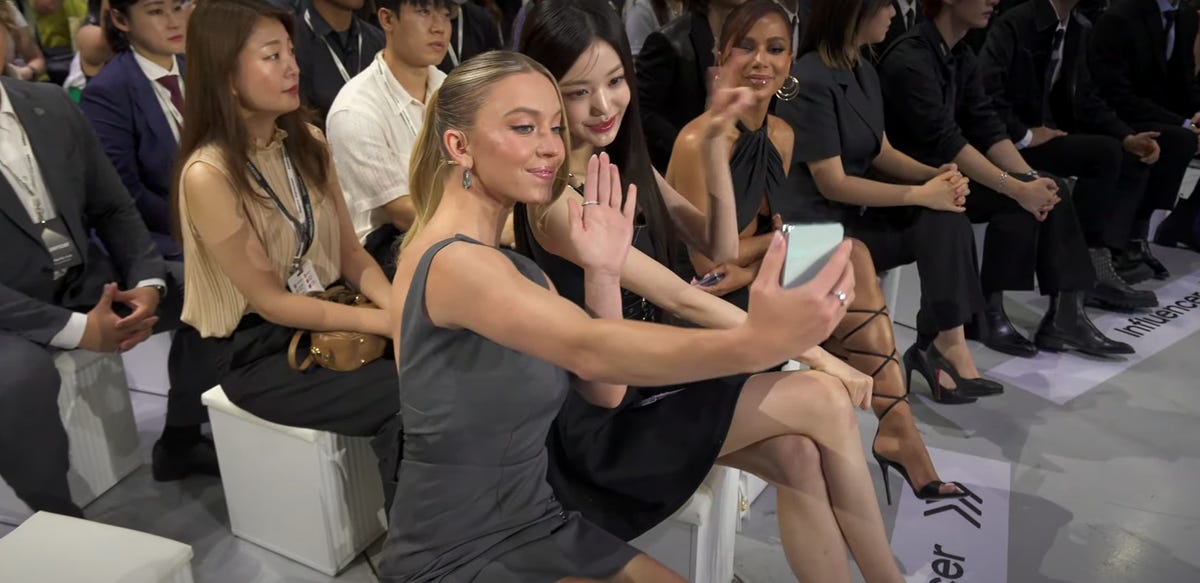
Back in the spotlight, en route to the mainstream
But it isn’t just Samsung. In general, flip phones are undergoing a drastic transformation in comparison to their book-style counterparts like Samsung’s Galaxy Z Fold 5 and Google’s Pixel Fold. And much of that change is happening on the front screen.
Weeks before Unpacked, Motorola launched its Razr Plus, outfitted with a larger cover screen that raised the bar for flip phones everywhere. In late 2022, Oppo, a top Chinese phone maker, shook up the cover design of flip phones first by introducing a vertically oriented cover screen to its first-ever flip phone, the Find N2 Flip.
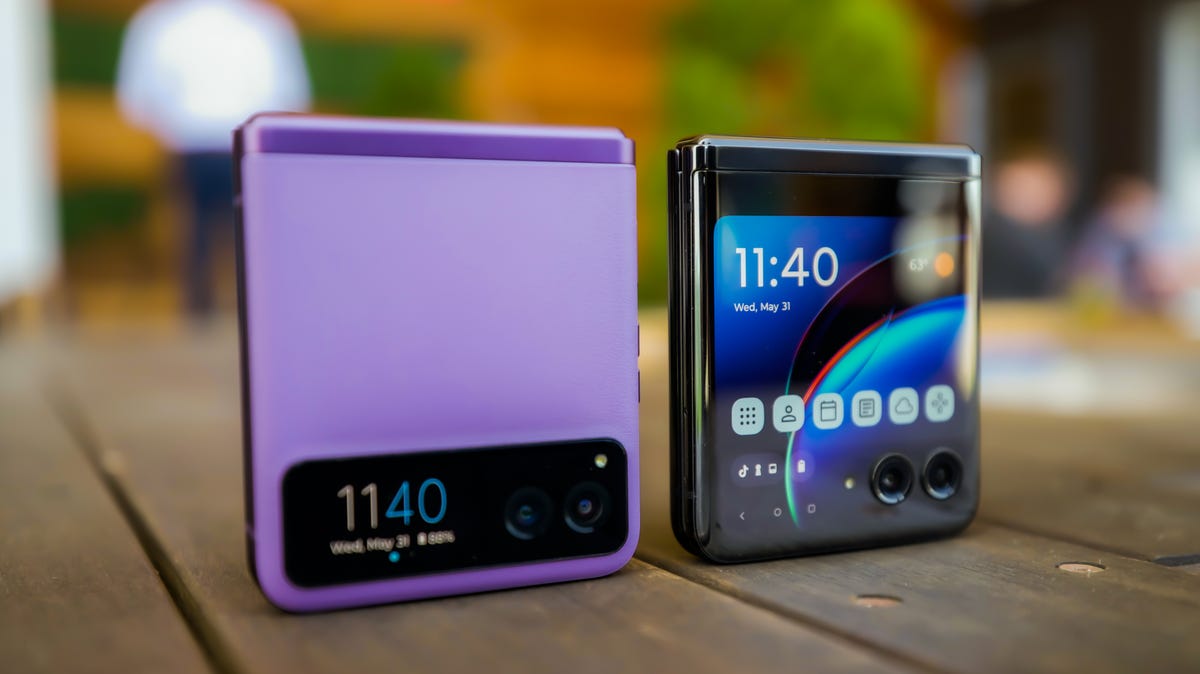
These new flippable cover screens seem to have hit a sweet spot: larger and more useful than a smartwatch, but smaller and less distracting than a normal phone screen. The previous generation of flip phones felt like a regular phone with a smartwatch on the front — convenient for cursory checks, but not much else.
«It’s the ‘be first or be better’ moment for the smartphone vendors,» said Will Wong, senior research manager at the International Data Corporation, a telecom market intelligence firm. «To win the foldable competition, the smartphone vendors will need to either be the first or create a more significant differentiation.»
Armed with bigger cover screens, flippables are poised to come back into the mainstream provided hurdles like durability are overcome. Either way, this latest wave of redesigns underscores how the flip phone is reclaiming its main-character energy more than ever before.
Take this anecdotal example: Oppo chose the Find N2 Flip as the product for its global foldable phone push, even though it had previously launched two book-style foldable phones in China. In fact, the Find N2 Flip is the crown jewel of Oppo’s global marketing blitz for its smartphone division, which involves sponsorships of elite sporting events including Wimbledon and the UEFA Champions League, which together attract a worldwide audience estimated in the hundreds of millions.
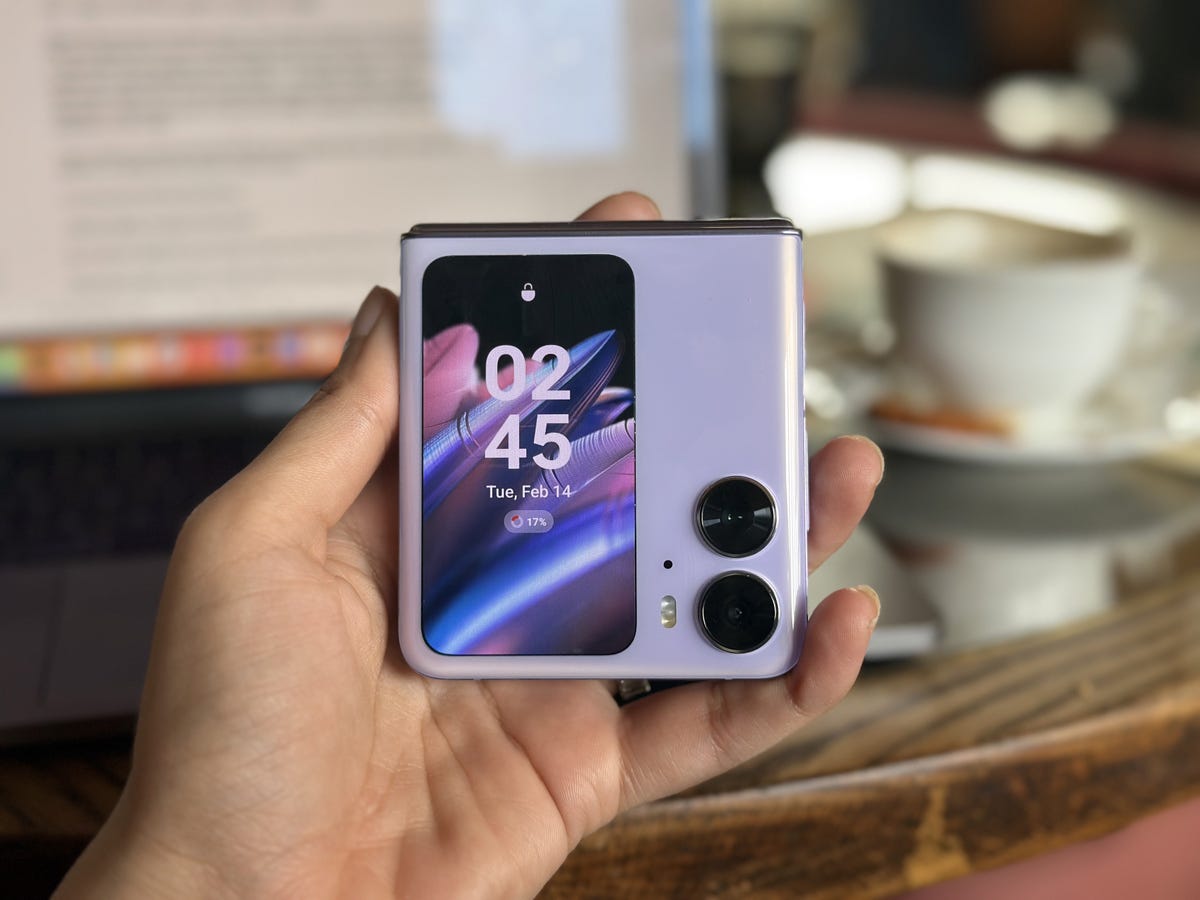
Read more: Oppo Is Using Elite Sports Events to Convince People to Buy Phones
It’s very possible that Oppo’s decision hinged on past sales performance of flip phones. Clamshell-style phones have accounted for more than 50% of foldable shipments from 2020 through to the first quarter of 2023, IDC told CNET in an email. This trend is unlikely to change, the research firm said, since the average selling price, or ASP, of a flip phone is generally lower than that of a book-style phone.
«By the first quarter of 2023, clamshell’s ASP was below US$1,000 and was around 60% of the book-style’s ASP,» Wong told CNET in July.
Though foldable phones still make up a small sliver of the broader smartphone market, sales of both book-style and flip phones are expected to balloon. IDC expects worldwide shipments of foldable phones to reach 21.4 million units in 2023. This represents an increase of more than 50% over the 14.2 million units shipped in 2022. By 2027, IDC expects foldable phones to capture 3.5% of overall market share, which translates to more than 48 million shipments.
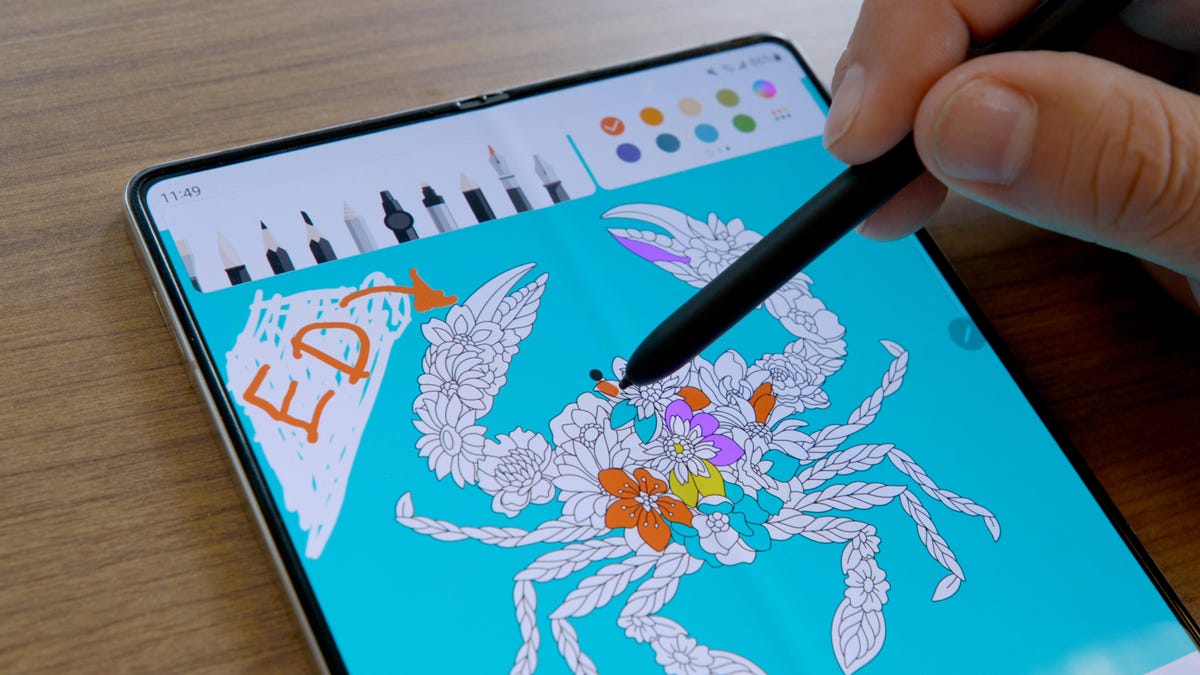
Refined, not redefined
Samsung announced the Galaxy Z Fold 5, its larger and more expensive foldable phone, alongside the Z Flip 5 at Unpacked. The book-style device is an improved version of last year’s Z Fold 4, with a different hinge. CNET’s Patrick Holland, who reviewed it, described the Z Fold 5 as a refinement rather than a redefinition. However, that essentially sums up the trend across the entire book-style foldable subcategory right now.
Though more players are entering the space, and with a range of designs, the transformation days for book-style foldables seem to be behind us. Sure, new entrants such as Google’s Pixel Fold and Honor’s Magic V2 are exciting and — in the case of the latter — impossibly thin. Book-style foldables may also be seen as being more technologically innovative than flip phones.
But they aren’t dramatically different from their predecessors right now, and that’s OK. In general, most phone makers have settled on the book-style design pioneered by Samsung in 2019 with its Galaxy Z Fold, meaning that device laid the foundation for the book-style foldable subcategory as we know it today. No small feat. A couple of years later, the Galaxy Z Fold 3 debuted with stylus support, which was also another major milestone in foldable phone innovation, but that was two years ago.
«In the short term, a significant transformation for book-style foldables in terms of hardware is not expected.» Wong told CNET in an email. «Nevertheless, we do see favorable use cases like navigation for this form factor. Thus, software optimization will still be one of the good directions for this particular product.»

Flipping into the future
Clamshell-style phones have come a long way since the trendy gadgets first broke onto the scene in the late 1990s. Today large cover screens seem to be a design hallmark for fancy flip phones, with Samsung, Oppo, and Motorola all slapping a bigger display onto the front of their respective flippables. With that change this year, it’s hard to imagine a dramatic evolution of the flip phone design going forward — it seems to have reached a stable point.
«The hardware design and the focus on the larger cover screen is not expected to have a huge change at this stage, as there is a limitation from the hardware aspect, especially when considering that the phone battery’s shape is unlikely to have a significant breakthrough in the short term.» Wong said.
The flip phone has certainly regained its cool factor, but it still has hurdles to clear before becoming mainstream. Device makers will likely focus on bringing improvements to the software and durability of their products, key areas of concern for foldables. Samsung’s Galaxy Z Flip 5, for instance, has no official IP rating for dust, meaning it can’t withstand dust ingress apart from the hinge dusters brushing particles away. That’s a lot to overlook for a $1,000 phone. Flip phones will also have to compete with established smartphones in terms of performance, price and features (better cameras, for example).
«And that is why we saw Motorola launched both Moto Razr 40 (Motorola Razr 2023 in the US) and Moto Razr 40 Ultra (Motorola Razr Plus), which is a dual-track strategy to attract consumers with lower budget,» Wong added.
Meanwhile, the Galaxy Z Flip 5 and its flippable rivals can enjoy their moment in the spotlight. They may not fully replace regular candy bar-shaped phones anytime soon, but they certainly offer a unique and nostalgic experience for those who appreciate their charm.
Flip phones are back, and it’s their time to shine.
Technologies
Today’s NYT Mini Crossword Answers for Thursday, Jan. 8
Here are the answers for The New York Times Mini Crossword for Jan. 8.

Looking for the most recent Mini Crossword answer? Click here for today’s Mini Crossword hints, as well as our daily answers and hints for The New York Times Wordle, Strands, Connections and Connections: Sports Edition puzzles.
Need some help with today’s Mini Crossword? I found 6-Across to be especially tricky. Read on for all the answers. And if you could use some hints and guidance for daily solving, check out our Mini Crossword tips.
If you’re looking for today’s Wordle, Connections, Connections: Sports Edition and Strands answers, you can visit CNET’s NYT puzzle hints page.
Read more: Tips and Tricks for Solving The New York Times Mini Crossword
Let’s get to those Mini Crossword clues and answers.
Mini across clues and answers
1A clue: Donate
Answer: GIVE
5A clue: Piece of equipment in curling or Quidditch
Answer: BROOM
6A clue: Tidbit of information
Answer: DATUM
7A clue: Prone to daydreaming
Answer: SPACY
8A clue: Athletic shorts fabric
Answer: MESH
Mini down clues and answers
1D clue: Flavor of a purple lollipop
Answer: GRAPE
2D clue: Greek letter I’s
Answer: IOTAS
3D clue: Go to bat (for)
Answer: VOUCH
4D clue: Award with Daytime and Primetime categories
Answer: EMMY
5D clue: Erotic practice in «Fifty Shades of Grey,» for short
Answer: BDSM
Don’t miss any of our unbiased tech content and lab-based reviews. Add CNET as a preferred Google source.
Technologies
New Foldable Phones Are Already Shaking Up the 2026 Smartphone Market
Commentary: Company announcements, analyst data and rumors of a foldable iPhone all point to an ambitious year for this still-young category.

What used to be a niche phone design is starting to flex its way into the mainstream. Foldable phones, which incorporate two or three panels that open into tablet configurations or condense down into compact sizes, are finding their audience. At CES 2026, for instance, Motorola announced its entry into with the book-style Razr Fold and Samsung showed off its Galaxy Z TriFold. Just as important, overall the category is seeing double-digit growth forecasts in 2026.
According to a December report from market research company IDC, global foldable phone shipments were expected to grow 10% in 2025 compared to 2024. And that number will continue to grow in 2026, with an expected 30% year-on-year jump, thanks to rumors of an upcoming foldable iPhone from Apple. And even though Samsung’s Flip and Fold phones have been around for years, the company’s newer TriFold and rumored «Wide Fold» have me hyped for what’s to come in 2026.
On the other hand, Huawei has led the way with innovative products, including its own trifold that beat Samsung to the category — the Huawei Mate XT — as well as a one-of-a-kind wide-screen flip phone, the Huawei Pura X. It dominated China’s foldable phones market with a massive 68.9% market share in the third quarter of 2025, according to a report from IDC (via MyDrivers). This is huge for a single brand in any market, especially when a niche category like foldables has several competitors (Oppo, Vivo, Xiaomi and more).
These new foldable phone styles, along with the rumored iPhone Fold from Apple — which is said to have a passport-size design — could mean we’ll see four different types of foldable phones by 2026, giving people more options for compact devices that unfold into larger screens.
The four kinds of foldable phones to expect in 2026
So far, the most popular foldable phones have been book-style (like the Galaxy Z Fold 7) and flip phones (like the Motorola Razr). While the former is a phone that unfolds into a mini-tablet, the latter folds into a more pocketable design. Both designs have their benefits, but if rumors are true, there are more ways to build a folding phone.
2026 will see two new designs in the category, and one of them has already been launched in several markets. Here’s why I think all these new foldable phones will have an audience.
Flip phones
The Galaxy Z Flip 7 and Motorola Razr lineups are built for those who want a compact phone without compromising on screen size. Not everyone has massive pockets in their jeans but that doesn’t mean they need to settle for a smaller screen. These flip phones are designed to be more pocketable while also offering the same 6.9-inch display as a regular slab phone.
Book-style foldables
The Samsung Galaxy Z Fold 7, Google Pixel 10 Pro Fold, Oppo Find N5 and Honor Magic V5 are all book-style foldables, which unfold to a mini-tablet. I like this design because I love browsing the web and reading on my phone and the squarish aspect ratio when unfolded makes it an excellent e-reader.
Recent developments in battery tech (silicon-carbon anode batteries) and hinge design have allowed manufacturers to shrink the crease depth and overall thickness to make them almost as slim as regular slab phones. These phones typically have big screens that aren’t ideal for videos, due to thick letterboxing. But they can be propped up by themselves, so you don’t need an external kickstand to watch 21:9 or 16:9 videos.
Book-style foldable phones are made for those of us who want to be more productive on a phone without needing a separate device.
The trifolds
This is the most versatile foldable phone design as of now and its best examples include the recently launched Samsung Galaxy Z TriFold and the Huawei Mate XT. However, not all trifolds are designed the same.
The Huawei trifold is the most versatile phone I’ve ever used, allowing me to use it as a phone, a mini tablet and a wide-screen 16:11 tablet for productivity and media consumption. It’s a true all-in-one device that delivers everything in a portable design.
By comparison, the Galaxy Z Trifold gives you a wide-screen 10-inch tablet that fits in your pocket and can also be used as a phone. It doesn’t offer a mini-tablet mode — you can use it either folded as a phone or fully unfolded — but Samsung’s trifold is designed as a productivity and media powerhouse. It’s essentially a flagship Galaxy Tab S-style device that fits inside your pocket.
Widescreen foldables
The Huawei Pura X is the best example of a wide-screen foldable so far. While some might argue that the first-generation Oppo Find N and Google Pixel Fold could fit under this category, their inner screens were also squarish (8.4:9 on the Oppo phone and 5:6 on the Pixel Fold); they were smaller book-style foldables.
In contrast, the Pura X has a 6.3-inch display with a wider 16:10 aspect ratio, which makes it an ideal screen for reading and watching videos. I used the phone recently for a few days and it’s the best combination of pockatability and versatility. You can watch videos with minimal letterboxing (thick black borders on top and bottom) on its 16:10 screen or use it like an e-reader in vertical orientation. And for the times when you need to snap some selfies using the rear cameras, you get a decent viewfinder in the form of a big cover screen — without making the phone unwieldy like book-style foldables.
Apple is rumored to adopt this approach with its upcoming iPhone Fold, but with a bigger cover screen. And Samsung is said to be developing a similar «Wide Fold» that’ll give you a 4:3 inner screen, too. According to a report from ETnews, this new Samsung foldable could have a 5.4-inch cover screen and support 25-watt wireless charging.
If the Korean company launches it alongside a presumed Galaxy Z Fold 8 and Flip 8, potentially in July 2026, it would launch ahead of Apple’s rumored foldable, which is presumed to launch in the fall.
While these foldable phones will likely be expensive — especially the newer trifold and wide fold shapes — they’re bringing a lot of new competition to a phone market that’s otherwise dominated by the candy bar shape. As we move into 2026, I’m looking forward to having multiple size, design and functionality options, much like we do with traditional phones.
Technologies
Speediance Unveils New Compact Resistance Trainer and Wearable
Speediance is aiming to make strength training more portable with a wearable unveiled at CES.

Speediance unveiled its new Gym Nano and Speediance Strap products this week at CES 2026. The smart fitness equipment manufacturer, which previously developed its own smart home gym, the Gym Monster 2, designed the Gym Nano and Speediance Strap to complement its current equipment ecosystem.
«Rather than developing products in isolation, we’re building a comprehensive training and health ecosystem that adapts to users’ real lives and empowers better decision-making over time,» Speediance founder and CEO Liu Tao said in a statement.
Speediance used the consumer tech expo in Las Vegas to demonstrate the Gym Nano, a portable, motor-driven cable resistance training system designed to occupy minimal space for those who prefer to work out at home. The strap is a prototype wearable device designed to read your health data and provide training recommendations based on this insight.
CNET previously tested Speediance’s VeloNix AI Smart Bike and named it the best AI-powered exercise bike.
Don’t miss any of our unbiased tech content and lab-based reviews. Add CNET as a preferred Google source.
Gym Nano
The Gym Nano is a compact digital cable resistance machine trainer that fits any space and delivers full-body workouts. It’s meant to make strength training at home easier if you have limited space and can’t commit to larger home gym equipment.
The Gym Nano offers up to 220 pounds of resistance through adjustable 1-pound increments. It also has five dynamic weight modes: Eccentric, Chain, Standard, Fixed Speed and Sled.
Speediance Strap
The Speediance Strap is a screen-free wearable that collects data related to your sleep, training and core body temperature. It then uploads and shares this data to the Speediance Wellness Plus app, where it makes suggestions for your daily training and recovery based on this information.
The strap can be used for both endurance and strength training activities and recognizes various types of exercises, movement patterns, training volume and other insights that can help you learn how well your body is responding to your training.
The Speediance Strap is a screen-free wearable that collects data related to your sleep, training and core body temperature. It then uploads and shares this data to the Speediance Wellness Plus app, where it makes suggestions for your daily training and recovery based on this information. Similar to other wearables, the Speediance Strap assesses your readiness each day and can detect stress factors to determine if you should focus more on recovery on that day.
«With Speediance Strap, we are exploring how wearable data can function as part of a decision-support layer within a connected fitness system, rather than existing as isolated metrics,» Tao said in a statement.
Additionally, everyday insights (like core and recovery data) will be free to you unless you want to upgrade to the Wellness Plus access, which will come at an additional cost to receive long-term insights and AI planning.
It’s unclear when the Gym Nano will be available for purchase, but the Speediance Strap is expected to launch through a Kickstarter campaign in spring 2026.
-

 Technologies3 года ago
Technologies3 года agoTech Companies Need to Be Held Accountable for Security, Experts Say
-

 Technologies3 года ago
Technologies3 года agoBest Handheld Game Console in 2023
-

 Technologies3 года ago
Technologies3 года agoTighten Up Your VR Game With the Best Head Straps for Quest 2
-

 Technologies4 года ago
Technologies4 года agoBlack Friday 2021: The best deals on TVs, headphones, kitchenware, and more
-

 Technologies4 года ago
Technologies4 года agoGoogle to require vaccinations as Silicon Valley rethinks return-to-office policies
-

 Technologies4 года ago
Technologies4 года agoVerum, Wickr and Threema: next generation secured messengers
-

 Technologies4 года ago
Technologies4 года agoOlivia Harlan Dekker for Verum Messenger
-

 Technologies4 года ago
Technologies4 года agoiPhone 13 event: How to watch Apple’s big announcement tomorrow
